Island in the Stream: A Recording Studio Bracketed by Traffic
SubCat Studios by Fiedler Marciano Architecture
The addition of an independent recording studio was an ideal fit for Syracuse, New York’s burgeoning local arts scene, but who would consider building a recording studio on a site surrounded by noise?
Although it is situated between downtown Syracuse’s Armory Square district and the Near Westside, two artsy neighborhoods on the rise, the Redhouse Arts Center is physically isolated. The 89-seat theater occupies a "private island" of sorts, severed from the urban fabric by highly trafficked roads and a freight rail overpass. Now it is no longer alone. When the adjacent three-story masonry structure known as 219 West became available, a benefactor of the Redhouse Arts Center, who is also an associate of the owner of SubCat Studios, saw a mutually beneficial opportunity to cement this little island’s status as a cultural destination.
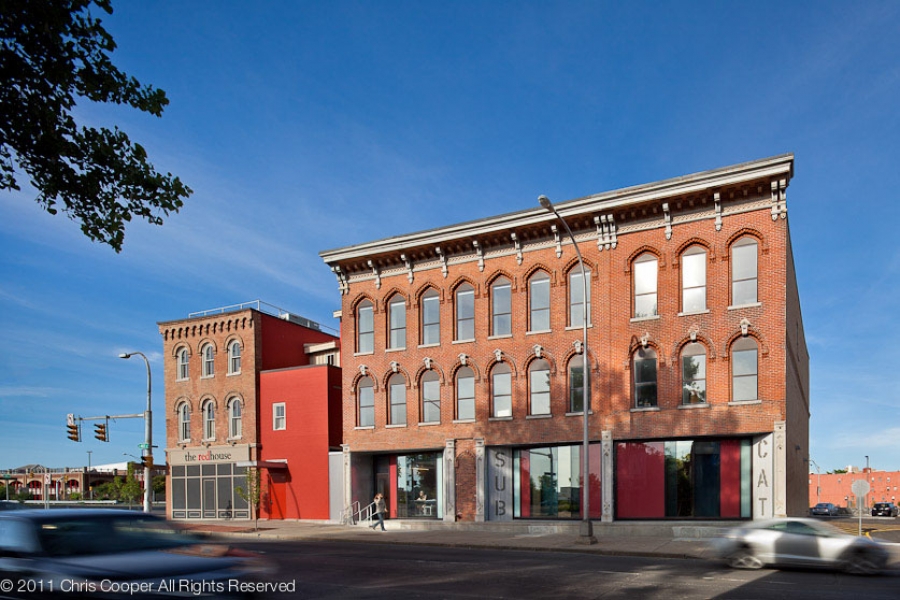 Image courtesy of Chris Cooper
Image courtesy of Chris Cooper
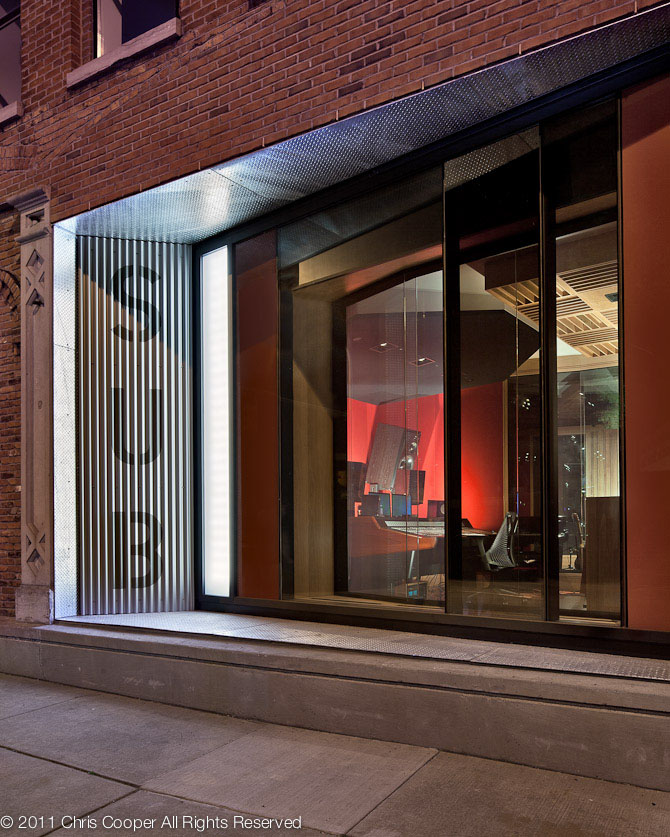
As the new anchor tenant of 219 West, SubCat Studios occupies spaces on the first floor and basement. The first floor also features a cafe and lounge area shared with the Redhouse Arts Center. The second floor contains areas for music instruction and rehearsal, which helps to fill the gap left by cuts to Syracuse public schools' music program funding. The upper level houses residential suites for visiting artists to the theater and studios, which enliven the area 24/7.
NYC-based Fiedler Marciano Architecture was engaged to transform the old building to accommodate all of those new programmatic uses and enliven its exterior. Principals Mark Fiedler and Martin Marciano both attended Syracuse University, so they were familiar with the area. They made a few subtle changes to the complex’s exterior so it appears more contemporary while also referencing the area’s industrial past. The designers clad the prominent stair and elevator tower with perforated corrugated metal panels. They articulated a new glass box that projects in the direction of downtown, creating a more inviting entrance to the building and washing the lobby with light. Bold red and white vertical stripes in the glazing also hint at the creative activities within.
The real challenge of the project was establishing a soundproof environment on the interior befitting a state-of-the-art recording studio, a seemingly impossible task amid all the train and traffic noise. On top of that, the architects had no previous experience designing recording studios, but with the help of Lally Acoustical Consulting, they devised some creative solutions that eliminated both sound and vibration transmissions while creating a unique studio atmosphere.
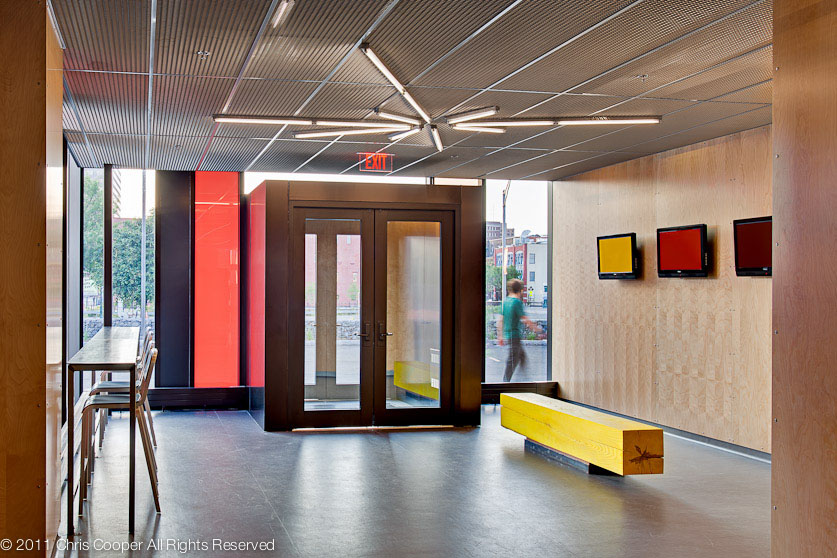
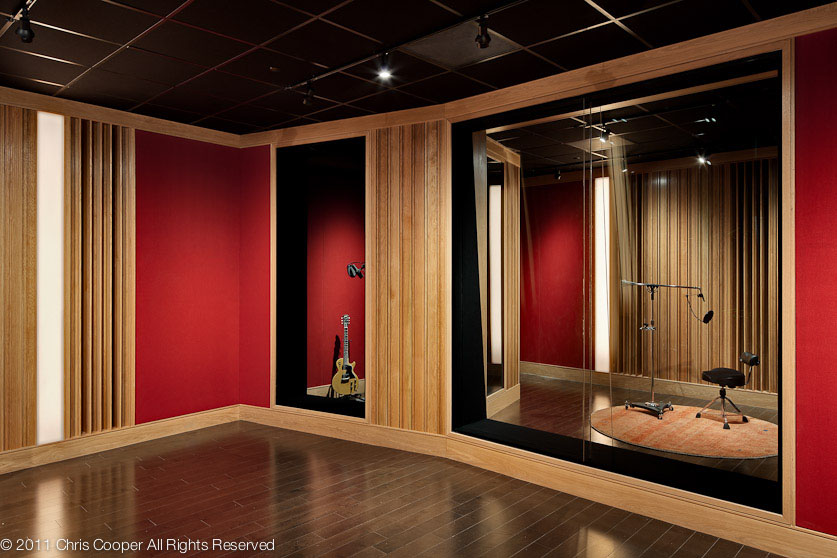
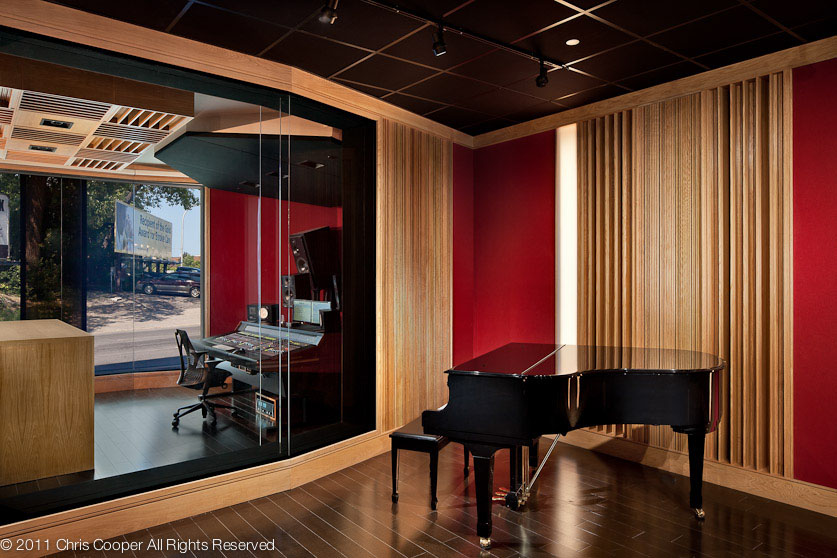
First, they removed the existing wood floor framing and replaced it with long-span concrete decking. Then they poured additional slabs that are raised on springs. These "floating" slabs support isolated wall and ceiling constructions for interior spaces that require complete silence, such as the live room and tracking room. Within these rooms, the designers avoided creating any parallel surfaces that would reflect sound back and forth, and they lined the walls with sound-absorbing or diffusing materials, as required. (You won’t find any of those typical, ugly acoustic tiles in SubCat.) The architects designed a striated wall pattern, which calls to mind a strip of DNA, using red fabric panels alternating with wood strips. Stained wood floors, black fabric-wrapped ceiling panels, and back-lit acrylic panels round out the functional yet edgy material palette.
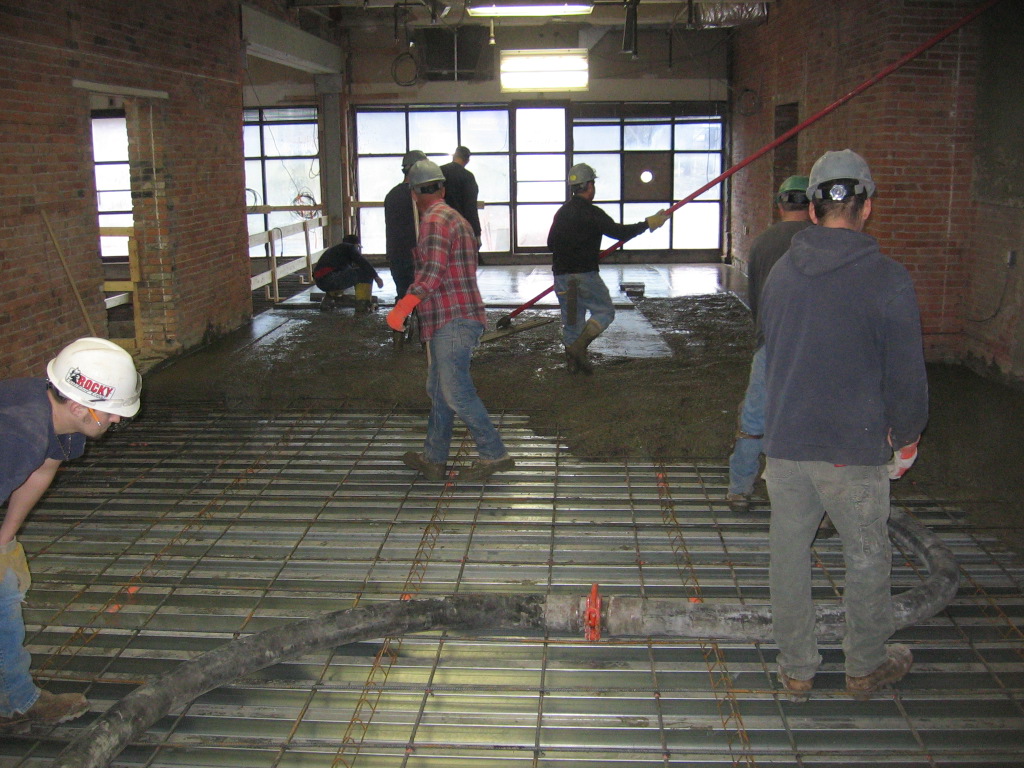
This striated pattern extends, of course, to the red and white glass facade at the street-level, through which passerby can peek into the control rooms and witness the recording process live. However, the sounds of the traffic and trains can’t penetrate the triple-layered glass. The dynamic new combination of SubCat Studios and the Redhouse Arts Center entices pedestrians and arts lovers to the other side of the tracks.
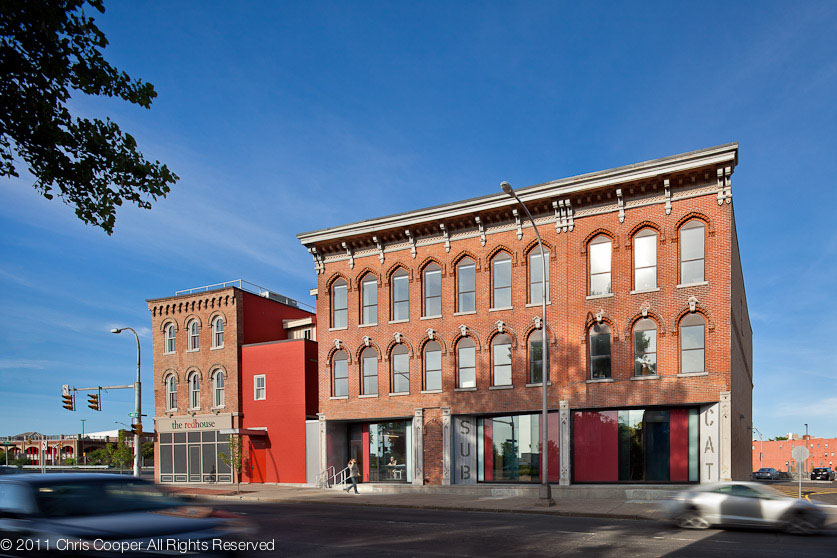

Murrye Bernard
Murrye is a freelance writer based in New York City. She holds a Bachelor's degree in Architecture from the University of Arkansas and is a LEED-accredited professional. Her work has been published in Architectural Record, Eco-Structure, and Architectural Lighting, among others. She also serves as a contributing editor for the American Institute of Architects' New York Chapter publication, eOculus.
Website: www.murrye.com






















